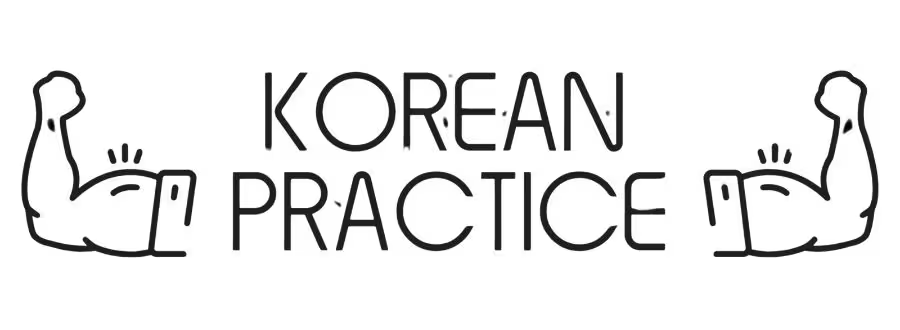Table of Contents
Introduction
Have you ever looked at Korean writing and thought it looks difficult? Good news — learning Korean basic consonants is actually straightforward! Korean is one of the easiest alphabets in the world to learn. With just 14 basic consonants and 10 basic vowels, you can start reading Korean words faster than you expect.
In this guide, you’ll discover how to learn Korean consonants, understand how the Korean alphabet (Hangul) is built, master Korean basic consonants pronunciation, and even start reading real Korean words today. Let’s dive into your first steps to how to read Korean with confidence!
What is Hangul?
- Hangul (한글) is the writing system for the Korean language, created in 1443 by King Sejong the Great. Before Hangul, Koreans used complicated Chinese characters. King Sejong wanted a simple, logical system so that everyone — even commoners — could read and write easily. Hangul consists of:
- 14 basic consonants (like ㄱ, ㄴ, ㄷ…)
- 10 basic vowels (like ㅏ, ㅓ, ㅗ…) These characters combine into blocks, each representing one syllable, making Hangul basics some of the most scientific alphabet foundations in the world.

Why is Hangul Easy to Learn?
- Here’s why learning Korean consonants is much easier than English or Japanese:
- Logical structure: Korean consonants are designed based on the shape your mouth makes when pronouncing them.
- No complicated spelling rules: Letters are written exactly as they sound.
- Few exceptions: Most letters behave consistently.
- Fast progress: Many learners can master how to read Korean basics after just one day of study.
Master the 14 Korean Basic Consonants
Let’s get straight into the 14 basic consonants you need to know to start reading Korean.
| Korean Letter | Pronunciation | Example Syllable | Sounds Like |
|---|---|---|---|
| ㄱ | g/k | 가 | ga in “go” |
| ㄴ | n | 나 | na in “no” |
| ㄷ | d/t | 다 | da in “day” |
| ㄹ | r/l | 라 | r/l sound, between “run” and “lead” |
| ㅁ | m | 마 | ma in “mom” |
| ㅂ | b/p | 바 | ba in “boy” |
| ㅅ | s | 사 | sa in “see” |
| ㅇ | silent/ng | 아 | silent at start, “ng” at end |
| ㅈ | j | 자 | ja in “jump” |
| ㅊ | ch | 차 | cha in “chair” |
| ㅋ | k | 카 | ka in “king” |
| ㅌ | t | 타 | ta in “top” |
| ㅍ | p | 파 | pa in “pop” |
| ㅎ | h | 하 | ha in “hello” |
🎧 Want to hear how these sound together? Watch the video below!
How Korean Syllables are Built: Consonant + Vowel
Korean consonants cannot stand alone. They must be combined with vowels to form a syllable block — a fundamental aspect of Hangul basics. Example:
- ㄱ + ㅏ → 가 (ga)
- ㄴ + ㅏ → 나 (na)
- ㄷ + ㅏ → 다 (da)
- ㄹ + ㅏ → 라 (ra) Each block forms a natural, complete sound, making Korean basic consonants pronunciation intuitive and Korean reading fast and rhythmic.
Practice Building Words
Here’s a simple practice you can do right now:
| Syllable | Meaning |
|---|---|
| 나 | I, me |
| 가다 | to go |
| 사다 | to buy |
| 바다 | sea |
Example Sentences:
나 가다 → “I go.”
나 사다 → “I buy.”
나 바다 가다 → “I go to the sea.”
Notice how quickly you are already making Korean sentences!
Common Mistakes When Learning Korean Consonants
Common challenges when learning basic consonants:
- Mistaking ㄹ for “l” or “r” — it’s between both
- Forgetting ㅇ is silent when it comes at the beginning of a syllable
- Mixing up ㅂ and ㅍ — ㅍ is more aspirated (“stronger p” sound) Don’t worry — with practice and focus on proper Korean basic consonants pronunciation, your tongue and ear will adapt quickly!
Quick Tips to Memorize Korean Consonants
Effective strategies to learn Korean consonants:
- Group by shape: ㄱ (k) and ㅋ (k’) are visually similar
- Group by sound family: ㅂ, ㅍ (b/p sounds)
- Create mnemonics: For example, ㄴ looks like a nose, and its sound is “n”
- Practice writing: Stroke order helps memory!
- Say them aloud: Perfect your Korean basic consonants pronunciation by speaking and listening at the same time
Ready to Learn More?
🎯 If you enjoyed this introduction to Korean basic consonants, you’ll love the full lesson inside our course:
- Stroke orders for all Korean consonants
- Audio drills for perfect Korean basic consonants pronunciation
- Interactive quizzes on Hangul basics
- Word-building practice to reinforce how to read Korean 👉 Access the full lesson here
Conclusion: Mastering Korean basic consonants
Learning Korean basic consonants is your first step toward reading Korean smoothly. Within just a few lessons of practicing Hangul basics, you’ll be able to:
- Read Korean signs
- Understand basic texts
- Build your vocabulary naturally 🎉 Start your Korean learning journey today by mastering these 14 basic Korean consonants — and you’ll be surprised how quickly you can progress with how to read Korean!
Sign up for my newsletter and get
📖 Korean short stories
🎧 Listening practice with audio
❓ Vocabulary and grammar quizzes
🎁 Free courses
📝 Blog updates
– all delivered straight to your inbox!








